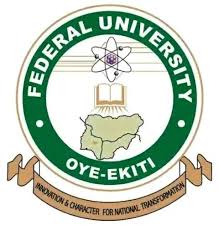Biology Keypoints; NUTRITION- PHOTOSYNTHESIS – FOOD SUBSTANCES; These topics are suitable for biology students in the following classes. JAMB, Post-UTME, IJMB and WAEC/NECO students.
Related; Biology Key Points; Science And Living Things
Related; Biology Keypoints; ORGANISATION OF LIFE AND CLASSIFICATION OF LIVING ORGANISMS
PLANT NUTRITION
Nutrition is a process whereby living organisms provide energy and materials for their growth, activities and reproduction using food substances.
PHOTOSYNTHESIS
Photosynthesis is the process whereby green plants manufacture their food in the presence of sunlight.
6H2O + 6CO2 C6H12O6 + 6O2
- Photosynthesis can only take place in the chloroplasts of plant cells in the presence of sunlight.
- The materials needed for photosynthesis to take place are carbon dioxide and water.
- The end product of the photosynthetic process is a simple sugar (glucose) while the waste product is Oxygen.
- Sunlight absorbed by chlorophyll (the green pigment in plants) is needed to drive this process
- During photosynthesis oxygen released comes from the water molecules, not carbon dioxide
- Most of the sugars produced are converted into starch and stored in insoluble form until night time and converted back to soluble form to be transported to other parts of the plants where they are needed. The movement of sugars is known as Translocation
MINERAL NUTRITION IN PLANTS
- Plants require mineral salts for the formation of proteins and healthy growth, these mineral salts cannot be made by plants they are therefore obtained from the soil.
- The major essential elements required by plants apart from carbon, hydrogen and oxygen are: Sulphur, Phosphorus, Nitrogen, Calcium, Iron, Magnesium and Potassium
- The minor (non-essential or trace elements) elements are Copper, Boron, Molybdenum, Manganese and Zinc.
NITROGEN CYCLE
Nitrogen is an essential constituent of protein found in all living cells. In nature, Nitrogen is constantly being removed from the soil and returned to it via the Nitrogen cycle
The nitrogen in the air is converted to soil nitrogenous compounds by:
- The action of thunderstorms
- Nitrogen-fixing micro-organisms
- Nitrogen trapped in the body of living organisms when they die re-enters the nitrogen cycle through Putrefaction or Decay
- The breakdown of protein into ammonia is known as Ammonification.
- Ammonia is converted to nitrates by nitrifying bacteria, nitrates in the soil are absorbed by plants’ roots and then converted back to plant proteins while Denitrifying bacteria in the soil convert nitrates into gaseous nitrogen which then escapes into the atmosphere; this reduces the nitrogen content in the soil and hence there’s soil fertility.
ANIMAL NUTRITION AND MODES OF NUTRITION
Food taken by animals can be divided into 6 groups: Carbohydrates, Proteins, Fats and Oils, Mineral salts, Vitamins and Water.
Carbohydrates: the main source of energy in the body. They can be sugar, starch and cellulose
Proteins: responsible for body-building, the building of new cells and replacing the old ones. They are also responsible for the formation of enzymes and hormones, they are macromolecules made of smaller units called amino acids.
Fats and Oils: they provide the body with energy, Fats are solids while Oils are liquids at room temperature.
Mineral salts: regulate the body’s metabolism.
Vitamins: they promote chemical reactions in the body.
Water: responsible for transportation of substances in the body, and regulation of body temperature. It is also a medium through which chemical reactions take place.
Roughage: stimulates the movement of bowels, and speeds up digestion.
NUCLEIC ACIDS
They are found in all living cells and are composed of strands made up of repeating units called Nucleotides. Each nucleotide consists of:
- A five-carbon sugar
- A phosphate group
- An organic Nitrogen- containing the base: Adenine, Guanine, Cytosine and Thymine
Types of Nucleic acids
- DNA – Deoxyribonucleic acid
- RNA – Ribonucleic acid
DNA is found in found on chromosomes of the nucleus of cells. It stores the organism’s hereditary traits and directs the day-to-day metabolic activity of each cell in the organism. It can replicate itself during cell division. It is the only material passed from parent or offspring.
RNA is similar to DNA only because it occurs in single strands consisting of ribose sugars instead of deoxyribose sugars. The basic function of RNA is to carry out the synthesis of proteins under the influence of DNA.
BALANCED DIET
A balanced diet is a meal that contains all material nutrients (classes of food) needed by the body in the right proportion at the right time.
ENZYMES: they are necessary for digestion. Examples of digestive enzymes: Protease, Amylase, Lipase and Cellulase.
Characteristics of Enzymes
- Enzymes are soluble.
- Enzymes are proteins.
- Enzymes are specific. e.g Lactase will only act on Lactose.
- Enzymes are organic catalysts.
- Enzymes are sensitive to temperature: they work best between 35-40°c.
- Enzymes are sensitive to the acidity or alkalinity of their environment.
- Enzymes can be inactivated by inhibitors. (Example of inhibitors: Mercury and Cyanide).
- Enzymes can bring about reversible reactions.
MODES OF NUTRITION
- Autotrophic nutrition: they can manufacture their own food. There are two types of autotrophic organisms: Photosynthetic and Chemosynthetic.
- Photosynthetic: green plants manufacture their food through sunlight.
- Chemosynthetic: organisms manufacture their food through inorganic molecules
- Heterotrophic nutrition: they cannot manufacture their own food, so they depend on other organisms to feed. Heterotrophic nutrition can either be Saprophytic, Parasitic, Holozoic, carnivorous (plants( and Symbiotic or Mutualistic
- Saprophytic: feeds on dead and decaying matter
- Parasitic: feeds on the host without killing it.
- Holozoic: feeds on a complex matter, digests and absorbs the nutrients. E.g Human beings
- Carnivorous plants: feeds on insects and other small organisms by trapping them with their special devices on the body
- Symbiosis (Mutualism): two organisms live together for the mutual benefit of each other. In a loose association, they lead independent lives while in a very close association they cannot live without each other as most times one organism lives inside the other. E.g Termites and Protozoa, the protozoa live in the gut of the termite. Termites feed on wood (composed of cellulose) and are not able to digest it, the protozoa help them digest it thereby receiving food and also protection.








